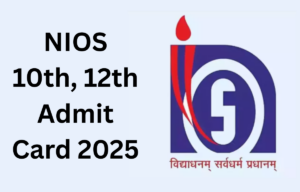Table of Contents
The Central Board of Secondary Education is all set to conduct the class 10 Maths Exam for the academic session 2024-25 on March 10, 2025. All the students who are preparing eagerly to appear and score high in this exam might now be looking for the CBSE Class 10th Maths Important Questions 2025. Therefore, as a relief for all those students, we have shared the most important questions for the CBSE Class 10 Mathematics Exam 2025 in the article below. These questions will surely help students with their last-minute preparation for the exam.
CBSE Class 10th Maths Exam Pattern 2025
The CBSE Class 10th Maths Question Paper 2025 will be divided into 5 sections so that all the students can easily differentiate among the types of answer and the marks to be allotted for them. Check the table below for the CBSE Class 10th Mathematics Exam Pattern 2025:
| CBSE Class 10th Mathematics Exam Pattern 2025 | |||
| Section | Question type | Questions | Marks per question |
| A |
Multiple choice questions
Assertion Reason questions
|
1-18
19-20
|
1 mark each |
| B |
Very Short Answer type questions
|
21-25 | 2 marks each |
| C |
Short Answer type questions
|
26-31 | 3 marks each |
| D | Long Answer type questions | 32-35 | 5 marks each |
| E |
Case study based questions
|
36-38 |
4 marks each
|
Check :- CBSE Class 10 Result 2025
CBSE Class 10th Mathematics Important Questions 2025
Q1. Three alarm clocks ring their alarms at regular intervals of 20 min., 25 min. and 30 min. respectively. If they first beep together at 12 noon, at what time will they beep again for the first time
(a) 4 : 00 pm
(b) 4 : 30 pm
(c) 5 : 00 pm
(d) 5 : 30 pm
Sol. Time when they ring together = LCM (20, 25, 30)
Sol. Time when they ring together = LCM (20, 25, 30)
By prime factorisation,
20 = 2 × 2 × 5
25 = 5 × 5
30 = 2 × 3 × 5
LCM (20, 25, 30) = 2 × 2 × 3 × 5 × 5 = 300
Thus, 3 bells ring together after 300 minutes or 5 hours.
Since, they rang together first at 12 noon, then they ring together again at 5 pm.
Q2. If a and b are two coprime numbers, then 𝒂3 and 𝒃3 are
(b) Not coprime
(c) Even
(d) Odd
We can understand the above situation with the help of an example.
HCF(𝑎, 𝑏) = HCF(3, 4) = 1
Then,
(a) 10
(b) –10
(c) –7
(d) –2
𝑝(𝑥) = x2+ 3𝑥 + k
⇒ 10 + 𝑘 = 0
⇒ 𝑘 = −10.


 NEET 2025 Admit Card Release Date Out, C...
NEET 2025 Admit Card Release Date Out, C...
 CBSE Result 2025: Will CBSE Release the ...
CBSE Result 2025: Will CBSE Release the ...
 NIOS 10th, 12th Admit Card 2025 released...
NIOS 10th, 12th Admit Card 2025 released...